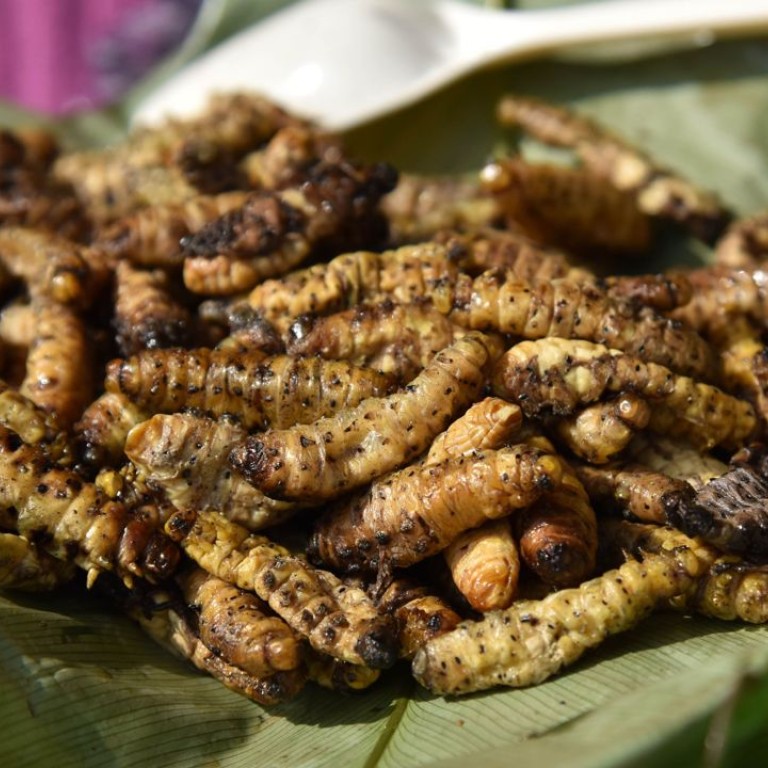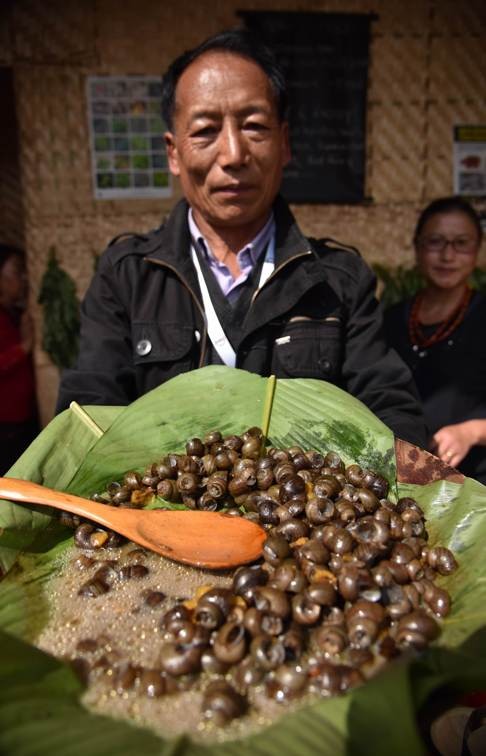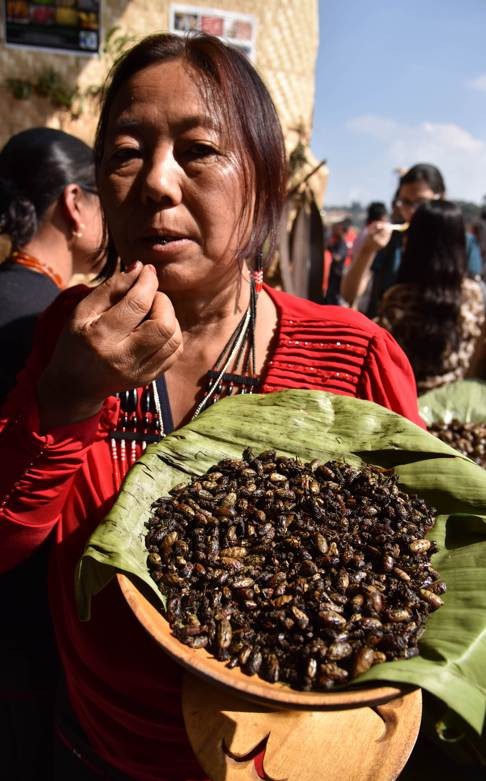
That’s good grub: Battling to save the disappearing delicacies of northeast India
Welhite Naro proudly proffers his fried spiders and grilled crickets along with a somewhat less exotic dish of millet and squash - a small sample of the disappearing delicacies of India's remote northeast.
Naro is a farmer from Nagaland, one of the eight states that make up northeast India, an area connected to the rest of the country by only a narrow sliver of land and with its own distinct cultural and culinary traditions.
“This is a snail collected from the paddy field,” he told visitors at a recent international food fair as he encouraged them to taste his produce.
“You have to eat it like this,” he said, as he demonstrated sucking the snail from its shell.

Geographically isolated from the rest of India, the northeast has maintained a food culture all of its own.
Beef is widely consumed, despite laws against slaughtering cattle in other parts of Hindu-majority India, where a campaign for a nationwide ban is gathering steam.
Pork - the staple meat of neighbouring China but relatively scarce in most of India - features prominently on the dinner tables of the northeast.
The region is also home to a wealth of plant varieties that experts say are dying out as diets become more standardised - a global trend that the Slow Food movement wants to combat.

The campaign began five years ago when the villagers, who belong to the matrilineal Khasi tribe, became concerned that the cultivation of the nutritious local staple millet was dying out.
Millet had been used to make a variety of snacks as well as the local beer, but villagers were increasingly opting instead to buy state-subsidised rice.
“Only two families were growing millet in 2010 because at that time we could get rice through the public distribution system,” said local farmer Pius Ranee, 27
Now they grow between 20 and 30 different crop varieties simultaneously in each field, with the village council deciding which crops will be planted.
It has even banned villagers from growing the straw used to make brooms - a lucrative crop - to try to avoid a food monoculture.
According to the Slow Food movement, just three cereals - wheat, rice and corn - now account for around 60 per cent of global grain consumption.
Three types of apple account for 90 per cent of those eaten around the world, even though there are thousands of less well-known varieties.
Even in an area where chain restaurants are few and far between - McDonald's has around 300 outlets in India, none of which are in the northeast - there are concerns that diets are becoming too standardised.
Indian dietetics expert Gracedalyne Rose Shylla Passah said recipes for many local foods such as the small snacks made of rice that are popular among the Khasis have never been written down.
“The knowledge of how these snacks are made is passed only verbally, only from mother to child. There is no documentation on this,” said Passah, of Avinashillingam University in the southern city of Coimbatore.
For producers, the Mei-Ramew festival provided an opportunity to introduce new consumers to the foods of the area - from rare varieties of fermented bamboo shoot to Jaha, a local rice variety known for its sweetness - both listed as endangered by the Slow Food movement.
“Even in the most remote villages, the younger generation is facing a choice between standardised food and this culinary heritage,” said Rahul Antao, co-ordinator of the North East Slow Food and Agrobiodiversity Society.
“These communities are the guardians of this biodiversity.”

.png?itok=arIb17P0)